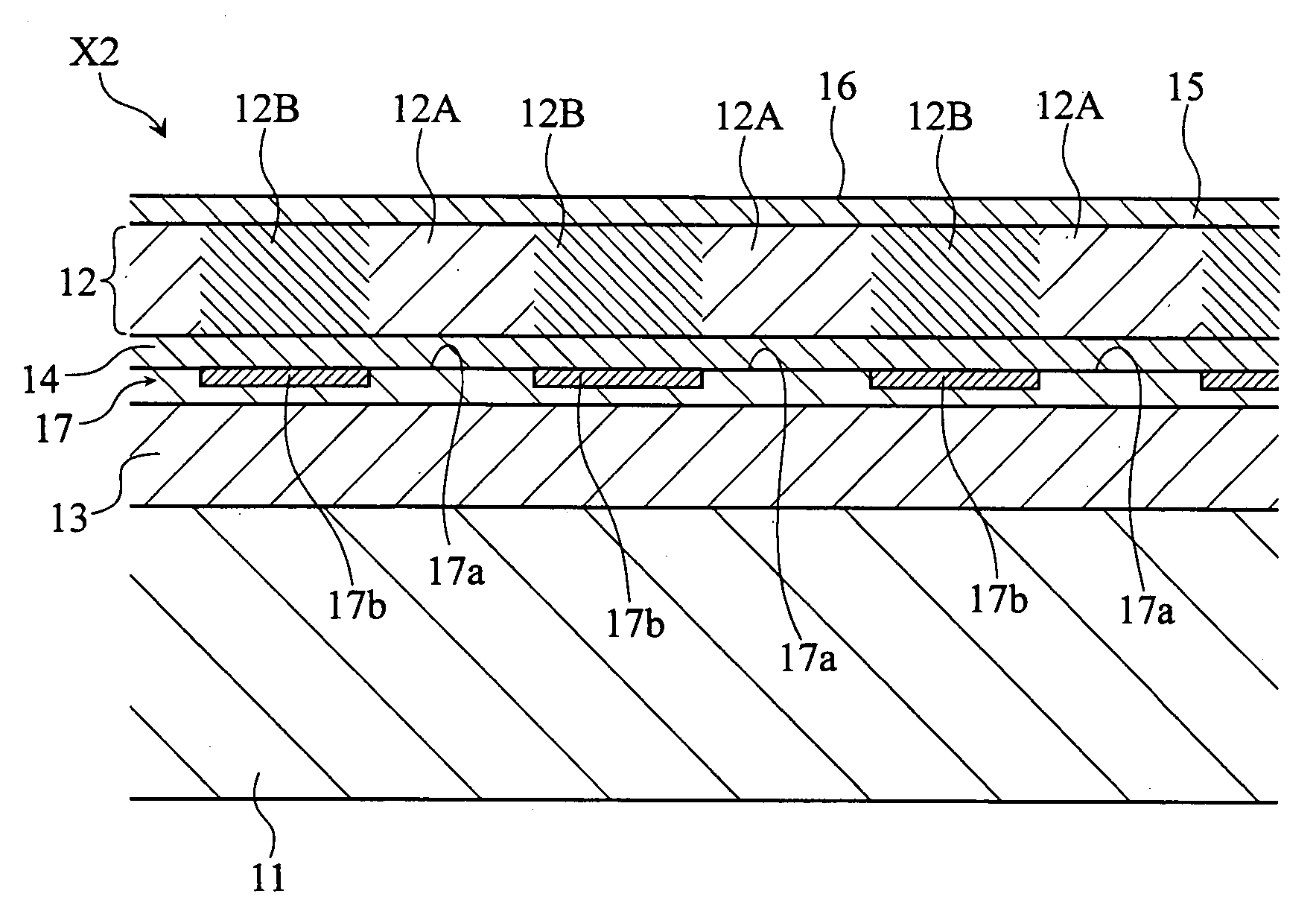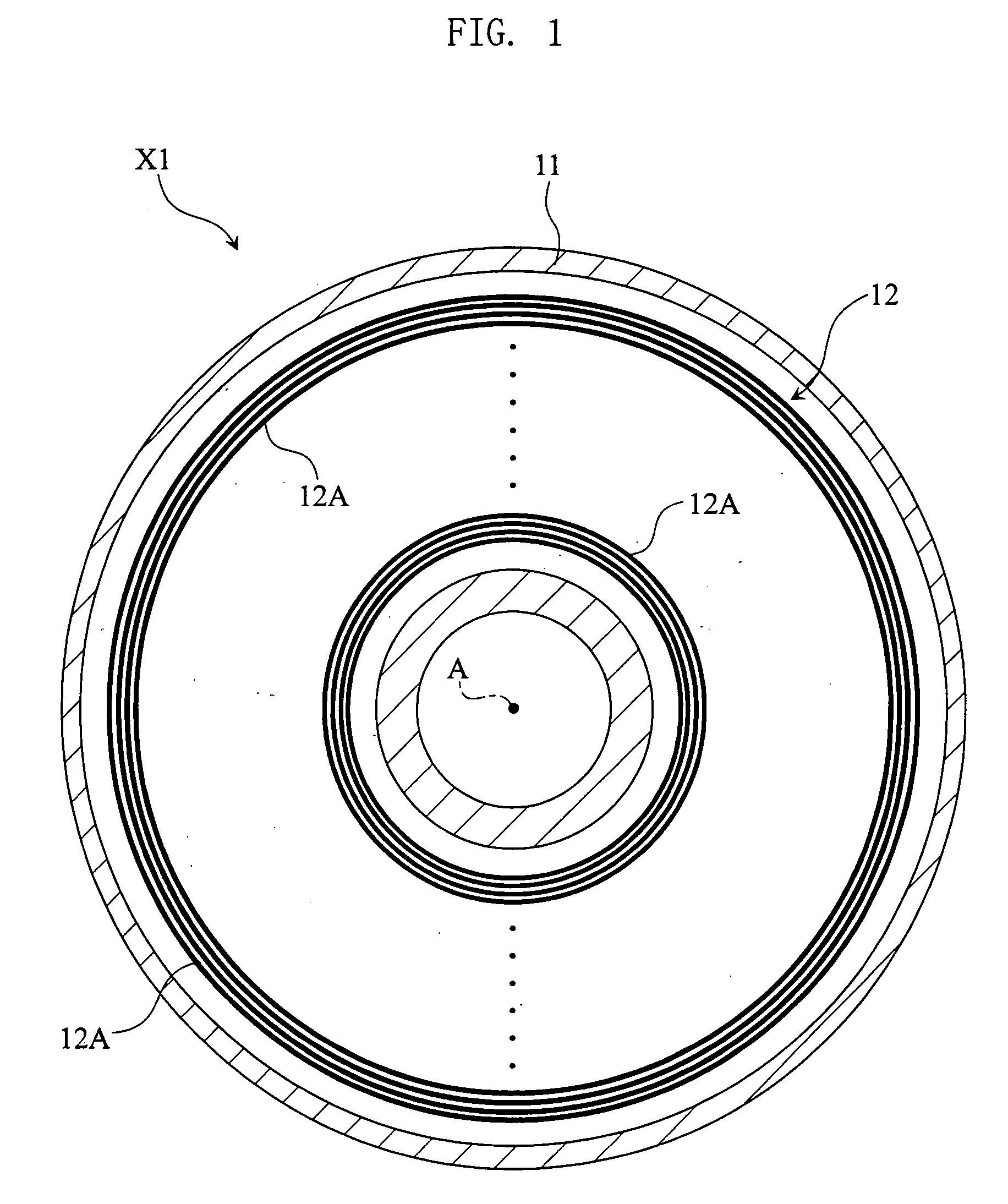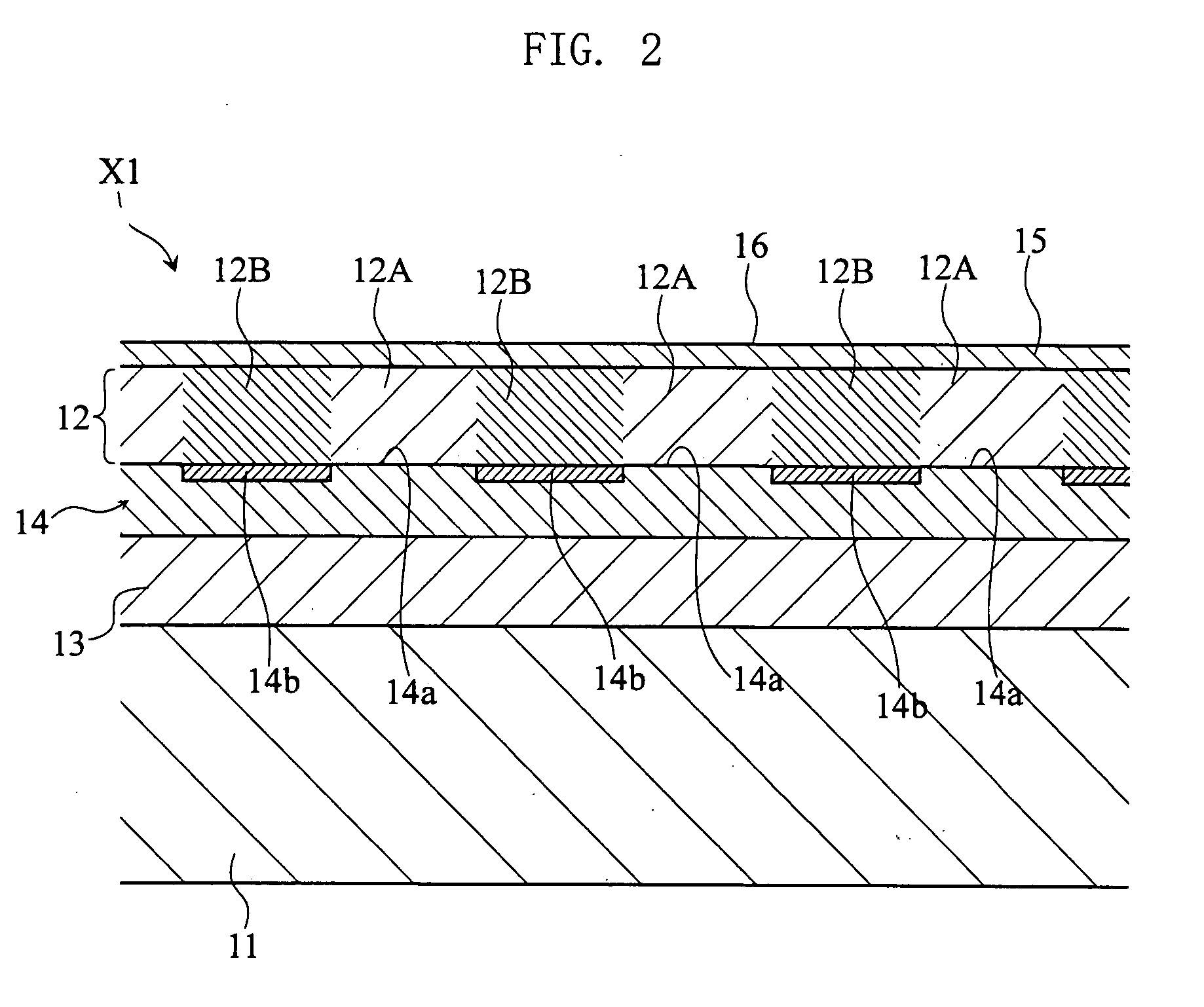Magnetic recording medium and method of making the same
a recording medium and magnetic technology, applied in the field of magnetic recording mediums, can solve the problems of not providing sufficient flatness on the recording surface, not providing sufficient flatness on the recording layer, and foregoing methods that are not suitable for mass production of magnetic disks, etc., to achieve the effect of suppressing a nois
- Summary
- Abstract
- Description
- Claims
- Application Information
AI Technical Summary
Benefits of technology
Problems solved by technology
Method used
Image
Examples
working example 1
[0124]
[0125]A layered structure as that shown in FIG. 16 was prepared as a layered structure sample for the working example 1. To make up the layered structure sample, firstly a sputtering process was performed to deposit CoZrNb of a predetermined composition ratio on a glass substrate, thus forming a CoZrNb layer in a thickness of 100 nm. The CoZrNb is popularly employed to constitute the soft magnetic layer of the magnetic disk. The sputtering process was performed in a predetermined chamber, utilizing a predetermined sputtering apparatus. This also applies to the subsequent sputtering processes. The gas pressure in the chamber was set at 0.8 Pa.
[0126]Then Ru was deposited by sputtering, thus to form a Ru layer of 50 nm in thickness, on the CoZrNb layer. The Ru is popularly employed to constitute the seed layer of the magnetic disk. For this sputtering process, the gas pressure in the chamber was set at 0.6 Pa.
[0127]Again the sputtering process was performed to deposit Co77Cr20Pt3...
working example 2
[0130]A layered structure as that shown in FIG. 16 was prepared as a layered structure sample for the working example 2. To make up the layered structure sample, firstly a CoZrNb layer of 100 nm in thickness and a Ru layer of 50 nm in thickness were sequentially formed on a glass substrate, through similar methods to those employed in the working example 1. Oxygen was introduced into the chamber and increased the pressure in the chamber to 0.2 Pa, and the Ru layer was exposed to oxygen for one second. Then oxygen was substantially removed from the chamber and set the degree of vacuum at 1×10−6 Pa, after which the sputtering process was performed to deposit Co77Cr20Pt3—SiO2 on the Ru layer thus forming a CoCrPt—SiO2 layer of 15 nm in thickness. That is how the layered structure sample for this working example was prepared. With respect to the layered structure sample for this working example, the vertical coercivity and in-plane coercivity of the CoCrPt—SiO2 layer were measured simil...
working examples 3 to 7
[0131]Layered structure samples for the working examples 3 to 7 were prepared similarly to that of the working example 1, except that the oxygen exposure time of the Ru layer was set at two seconds (working example 3), four seconds (working example 4), eight seconds (working example 5), 16 seconds (working example 6), and 30 seconds (working example 7), instead of one second. With respect to the layered structure samples for the respective working examples, the vertical coercivity and in-plane coercivity of the CoCrPt—SiO2 layer were measured similarly to the layered structure sample for the working example 1. The measurement result of the vertical coercivity from the working examples 3 to 7 is indicated by plots E3 to E7 in the graph of FIG. 17, and the measurement result of the in-plane coercivity from the working examples 3 to 7 is indicated by plots E3′ to E7′ in the graph of FIG. 18.
[0132]
[0133]From the graph of FIG. 17, it is understood that because of the oxygen exposure of t...
PUM
| Property | Measurement | Unit |
|---|---|---|
| thickness | aaaaa | aaaaa |
| width | aaaaa | aaaaa |
| width | aaaaa | aaaaa |
Abstract
Description
Claims
Application Information
 Login to View More
Login to View More - R&D
- Intellectual Property
- Life Sciences
- Materials
- Tech Scout
- Unparalleled Data Quality
- Higher Quality Content
- 60% Fewer Hallucinations
Browse by: Latest US Patents, China's latest patents, Technical Efficacy Thesaurus, Application Domain, Technology Topic, Popular Technical Reports.
© 2025 PatSnap. All rights reserved.Legal|Privacy policy|Modern Slavery Act Transparency Statement|Sitemap|About US| Contact US: help@patsnap.com



